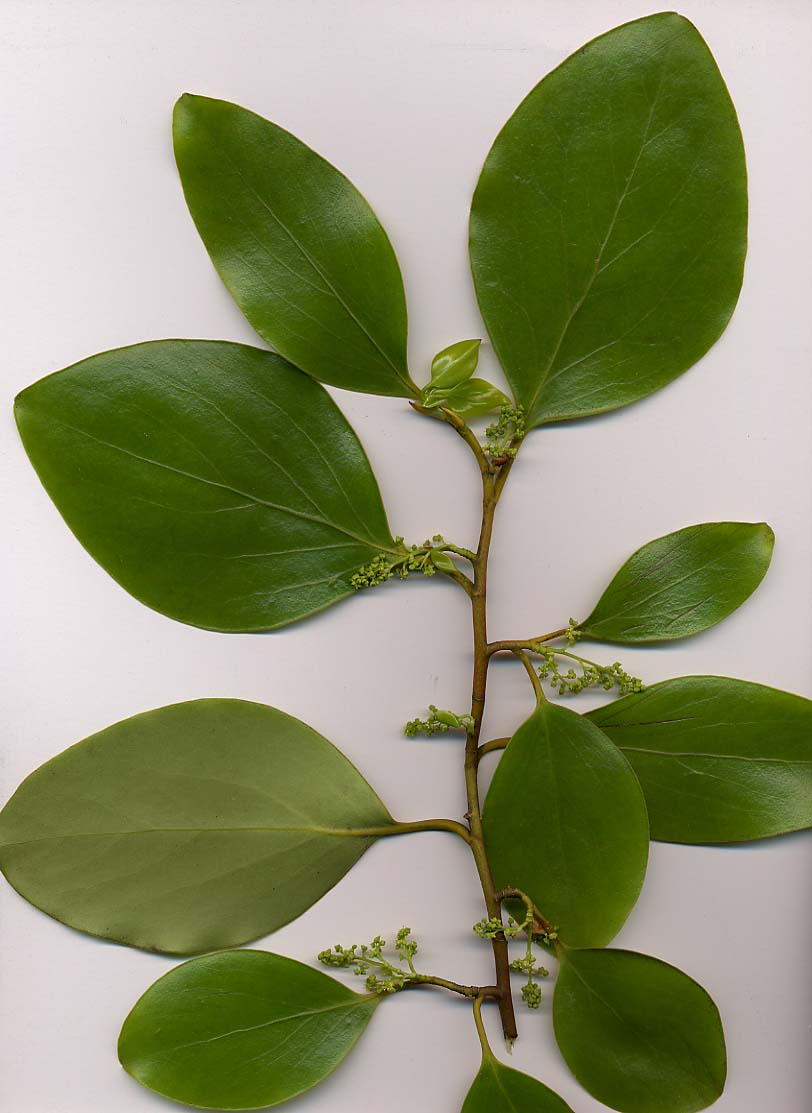Akiraho
Olearia paniculata
Olearia paniculata, commonly known as Akiraho, is a hardy coastal tree daisy endemic to New Zealand. This attractive small tree or large shrub is characterized by its distinctive wavy-edged leaves and clusters of fragrant white flowers. Well-adapted to coastal conditions, it makes an excellent hedge or shelter plant in exposed sites while also providing important habitat for native insects and birds.

Image credit: Wikipedia
Quick Facts
| Height | 3-6 meters |
|---|---|
| Spread | 2-4 meters |
| Water Needs | Low to moderate |
| Light | Full sun to partial shade |
| Growth Rate | Moderate |
| Soil Type | Well-draining, tolerates poor soils |
| Frost Tolerance | Moderate |
Climate Best Suited To
Akiraho (Olearia paniculata) is adaptable to a range of New Zealand climates. It thrives particularly well in coastal to mid-altitude regions with moderate rainfall.
| City | Climate Suitability |
|---|---|
| Whangārei | Ideal |
| Auckland | Ideal |
| Hamilton | Good |
| Tauranga | Ideal |
| Rotorua | Good |
| Gisborne | Ideal |
| New Plymouth | Ideal |
| Napier | Ideal |
| Whanganui | Ideal |
| Palmerston North | Good |
| Wellington | Ideal |
| Nelson | Ideal |
| Christchurch | Good |
| Dunedin | Moderate |
| Invercargill | Challenging |
Growing Requirements
Soil Requirements
Akiraho adapts to various soil conditions:
- Prefers well-draining soil
- Tolerates coastal sandy soils
- Adapts to clay if drainage is improved
- Neutral to slightly acidic pH preferred
- Low to moderate fertility requirements
Light Requirements
This small tree grows best in:
- Full sun to partial shade
- Tolerates coastal exposure
- Prefers protection from harsh afternoon sun in hottest regions
- Filtered light works well in garden settings
Water Requirements
Water needs for Akiraho:
- Moderate watering while establishing
- Drought tolerant once established
- Sensitive to waterlogged conditions
- Water deeply rather than frequently
Uses & Significance
Garden Uses
- Specimen tree or large shrub
- Hedging and screening
- Coastal gardens
- Windbreaks
- Mixed native plantings
Cultural Significance
- Traditional medicinal uses by Māori
- Important in ecological restoration
- Habitat for native insects and birds
Ecological Value
- Erosion control on slopes
- Coastal stabilization
- Provides shelter for wildlife
- Food source for native insects
Seasonal Care Calendar
Spring
- Apply slow-release fertilizer if needed
- Mulch around base to retain moisture
- Good time for planting new specimens
- Monitor for new growth and pests
Summer
- Water deeply during dry periods
- Watch for scale insects
- Light pruning can be done if needed
- Provide shade for newly planted trees
Autumn
- Ideal season for planting
- Reduce watering as temperatures drop
- Apply mulch before winter
- Check tree structure before winter storms
Winter
- Minimal maintenance needed
- Major pruning can be done during dormancy
- Protect from severe frosts if young
- Plan for spring planting
When to Prune and How Much
Akiraho responds well to pruning and can be shaped as desired:
- Prune in late winter to early spring
- Remove dead or damaged branches anytime
- Can be maintained as a hedge with regular trimming
- Responds well to hard pruning if needed
- Shape young trees by selectively removing branches
Planting Guide
When to Plant
The best times to plant Akiraho are:
- Autumn - ideal in most regions
- Spring - good alternative, especially in colder areas
- Avoid summer planting unless regular watering is possible
Planting Steps
- Choose a site with well-draining soil and appropriate light
- Dig a hole twice as wide and the same depth as the root ball
- Add compost to the soil if needed for poor soils
- Place the plant at the same level as it was in the container
- Backfill with soil, firming gently
- Water thoroughly and apply mulch around the base
- Stake if planting in windy sites
Propagation Methods
From Seed
Seed propagation is relatively straightforward:
- Collect seeds when ripe in autumn
- Clean and remove any attached fluff
- Sow in seed-raising mix
- Keep moist but not wet
- Germination may take 4-8 weeks
From Cuttings
Semi-hardwood cuttings can be taken in summer:
- Take 10-15cm cuttings from semi-mature shoots
- Remove lower leaves and dip in rooting hormone
- Place in a free-draining propagating mix
- Keep humid and in bright, indirect light
- Roots should develop within 6-10 weeks
Cultural History
Akiraho has cultural significance in New Zealand:
- Used in traditional Māori medicine (rongoā)
- Valued for its durability and adaptability in challenging environments
- Important component in forest restoration projects
- Represents the resilience of native flora in coastal environments
Pests & Diseases
Common Pests
- Scale insects - treat with horticultural oil
- Leaf roller caterpillars - manual removal or organic insecticides
- Generally pest resistant when healthy
Diseases
- Root rot in poorly drained soils
- Powdery mildew in humid conditions with poor air circulation
- Fungal leaf spots - remove affected leaves and improve air circulation
Bonus Tip
To create a stunning landscape feature, plant Akiraho where its glossy leaves can catch and reflect light, particularly in morning or evening sun. The contrast between the dark green upper leaf surface and silvery-white underside creates a beautiful effect when leaves move in the breeze. This effect is particularly dramatic when used as a backdrop for plants with contrasting foliage colors.


